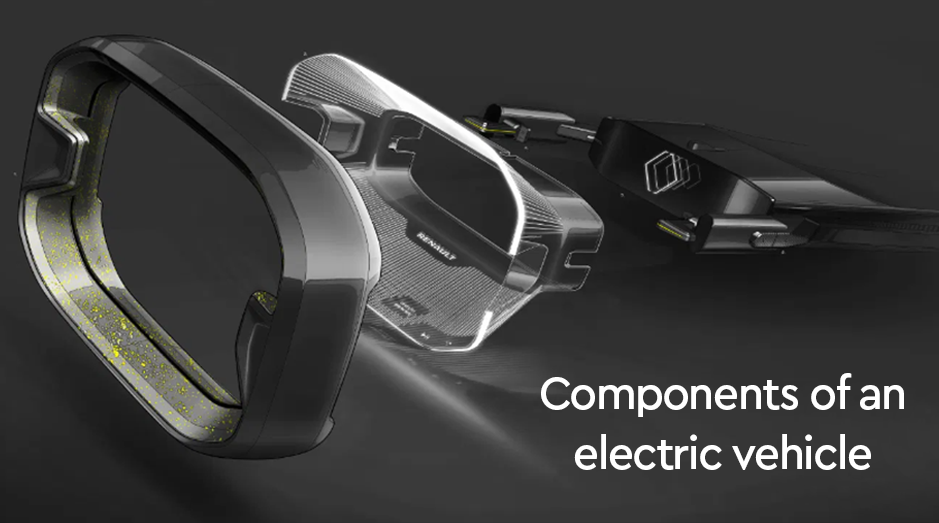Most important Components of an electric vehicle
Hello there. Here are the most important components of an electric vehicle.
Battery
Battery is the heart of an electric vehicle. It provides electricity to drive the vehicle. Most commonly used batteries in electric vehicles are Lithium Ion batteries.
An electric vehicle battery is often composed of many hundreds of small, individual Lithium ion cells arranged in a series/parallel configuration to achieve the desired voltage and capacity in the final pack. Lead acid batteries are also used in some cases.
Are you looking to start your business in the electric vehicle industry? We provide software development, web application development, mobile application development, charging stations management app, electric vehicle fleet management software development, cyber security and all software services. Please check our home page here https://iwheels.co/

Ok. Let's get back to the article.
Charge port
The charge port of an EV allows the vehicle to connect to an external power supply in order to charge its battery pack. Also there are different levels of charging namely Level 1, Level 2, Level 2. This will be discussed in detail in another article.
DC/DC converter
This device converts higher-voltage DC power from the battery pack of EV to the lower-voltage DC power needed to run electric parts of the vehicle and recharge the secondary battery.
Electric motor
Electric motor in a EV replaces the engine of a fuel based vehicle. Using power from the EV battery pack, this motor drives the vehicle. Some vehicles use electric motor that perform both the drive and regeneration functions.
Onboard charger
Onboard charger takes the incoming AC electricity supplied through the charge port and converts it to DC power for charging the EV battery. It also monitors battery parameters such as voltage, current, temperature, and state of charge while charging the pack.
Power electronics controller
Controller unit manages the flow of electrical energy delivered by the battery pack, controlling the speed of the electric motor and the torque it produces. A simple DC controller connected between the battery pack and the DC motor.
If the driver floors the accelerator pedal, the controller delivers the full volts from the batteries to the motor. If the driver takes his/her foot off the accelerator, the controller delivers zero volts to the motor.
Thermal system
This system maintains a proper operating temperature range of the engine, electric motor, power electronics, and other components. The performance of the electric vehicle can fluctuate heavily depending on how warm or cool it is, and cases of serious overheating can also be a severe safety concern.
Much like a smartphone, keeping an EV battery at an optimum temperature can help to preserve its capacity, optimize its time of charge and retain the health of its cells.
Transmission
The transmission transfers mechanical power from the electric traction motor to drive the wheels. Electric motors have a larger RPM range than the typical internal combustion engine.
So instead of packing the car with numerous gears to keep the engine in its comfort zone, designers of electric cars just pick a gear ratio that provides a good compromise between acceleration and top speed.
Hope this article on most important components of an electric vehicle is useful to you. To read about jobs in the Electric Vehicle Industry, please visit Job opportunities in Electric Vehicle Sector and its Charging Infrastructure industry




